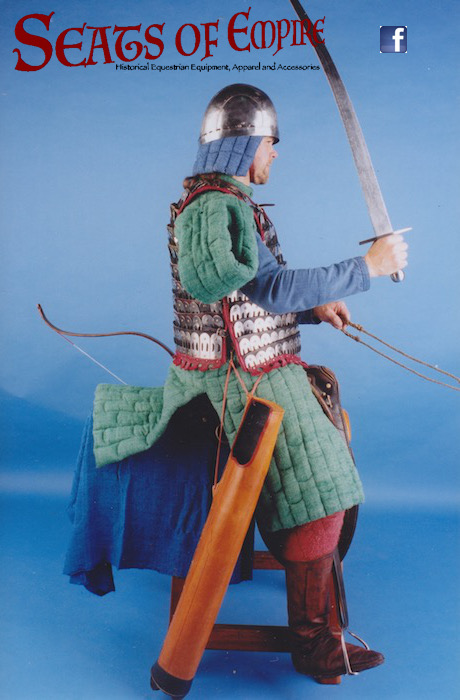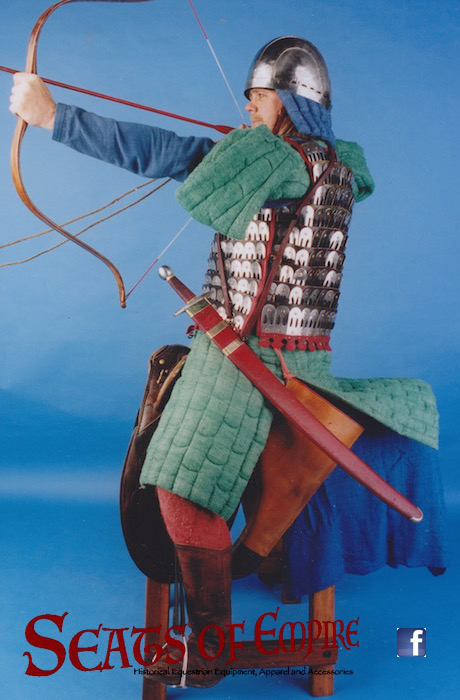Accessories
Girths, Spurs, Archery equipment, Leatherwork, Shields
Girths
Saddles need some sort of binding to keep them on the back of the mount. All sorts of methods have been used over centuries and cultures. Most common were textiles (the term encompasses leather as well as fibres of plant and animal origins) woven via various methods.
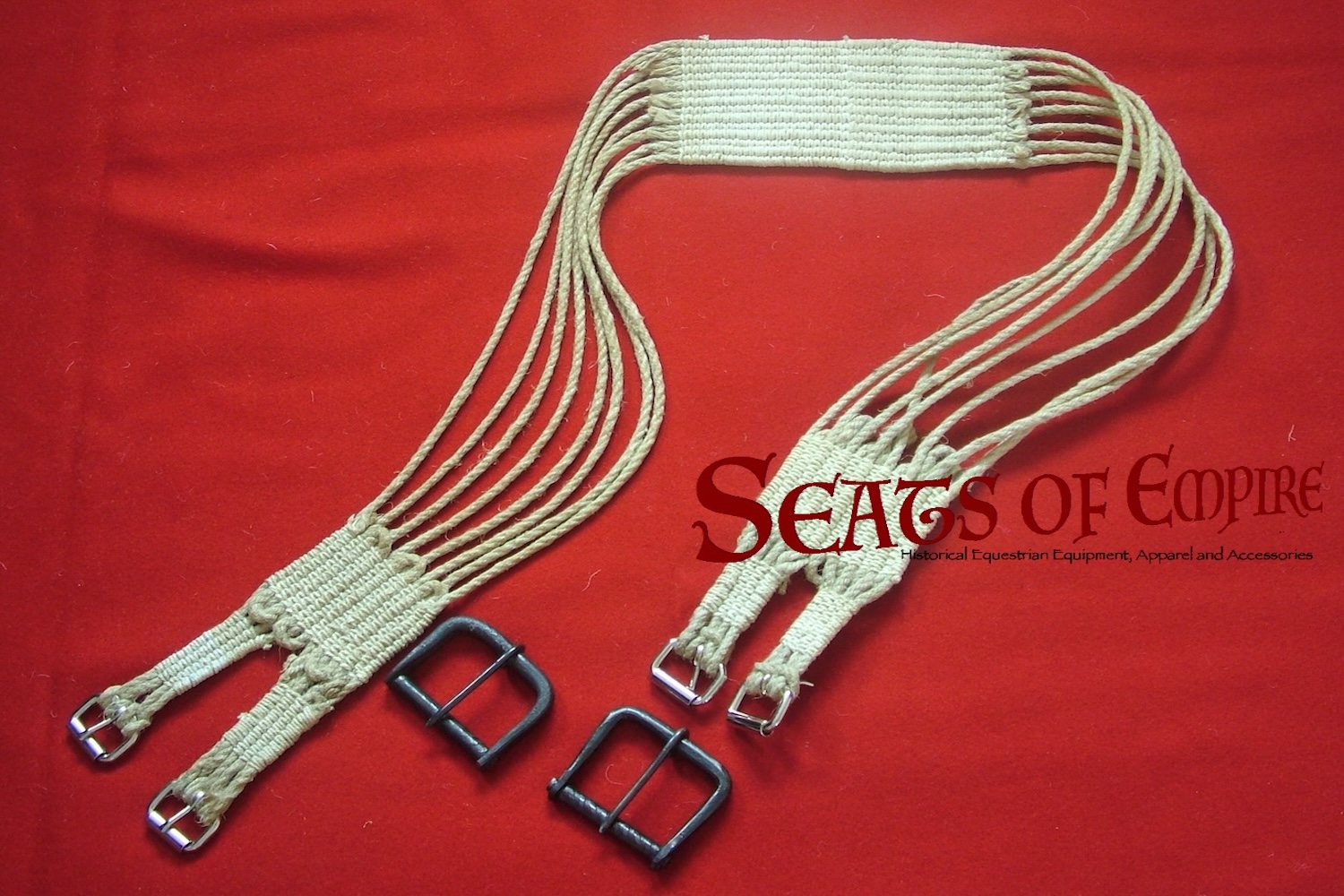
A cord girth woven using a technique that is traditional, but to my present knowledge not documented as pre-modern. This is a very time-consuming process. The complete girth is contrived to match modern practice. The accompanying buckles are the early form of rollers used from the fourteenth century and probably also by the Romans.
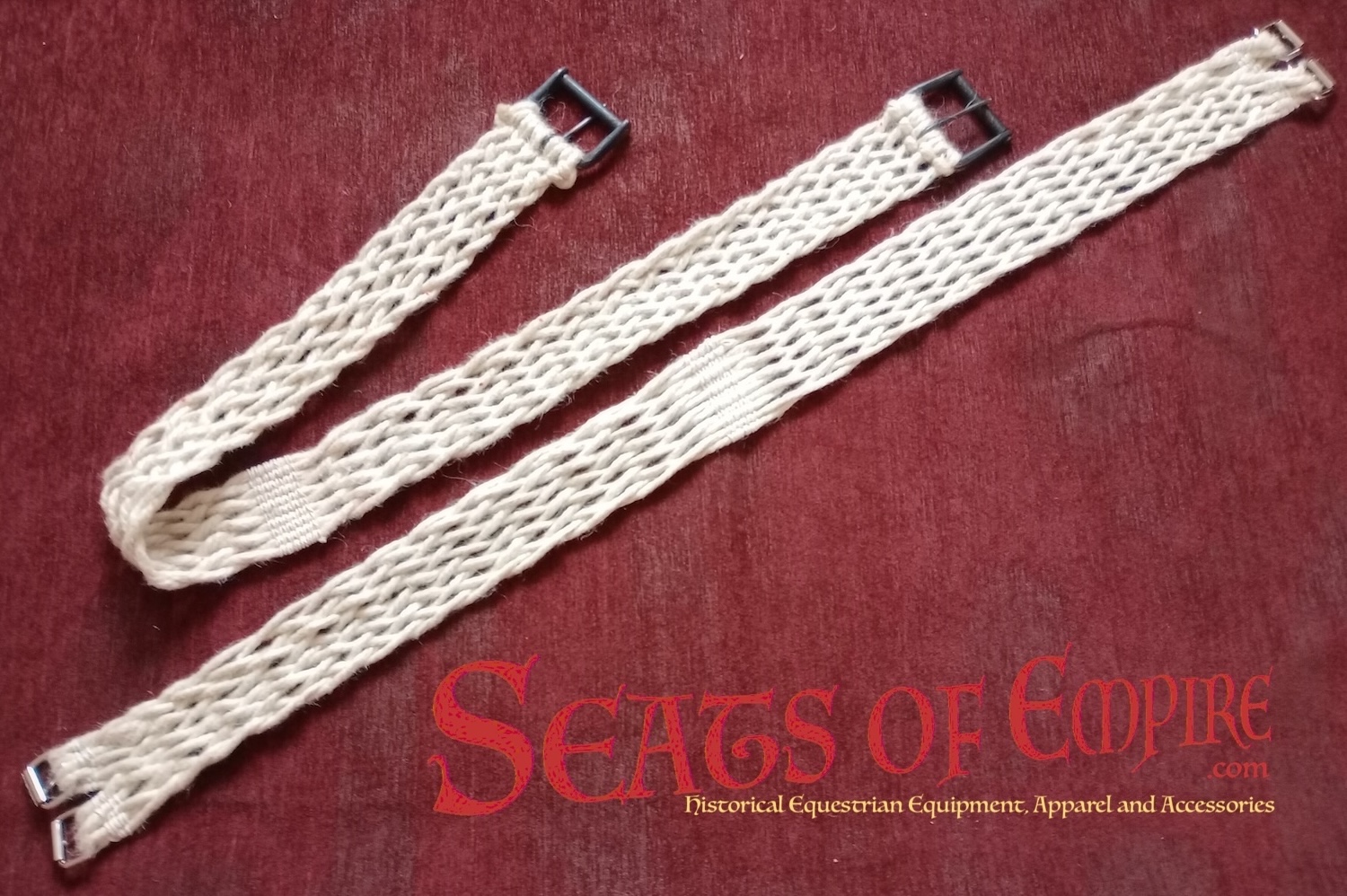
Cord girths woven using an ancient technique called ’sprang’. This is very much quicker than the adjacent method. One girth with modern arrangements and one with historically styles roller buckles.
Spurs
Ancient
Exhibits of historical artefacts, whether in museums or on line, always favour pretty things. There are certainly pretty spurs from the ancient world, virtually all cast in copper alloy. Yet the most prolific finds across the Roman realm are simple hooked spurs made of iron.
Here is one pair reproduced as the originals (left), and one pair adapted in accord with modern preferences for animal welfare (right).
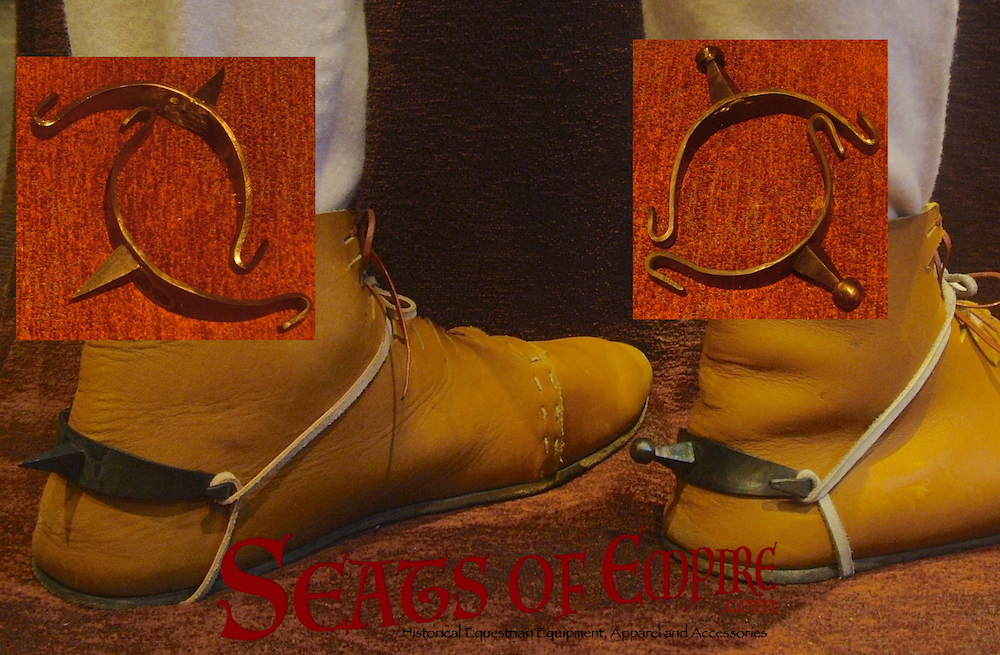
Replica Roman hooked spurs of iron.
Medieval
The middle ages yield a much greater diversity in spurs. The arms are universally longer than the ancient ones. They are initially straight, while from the second half of the twelfth century the arms increasingly show curvature in the vertical axis. Prick spurs remain ubiquitous, but from around the turn of the fourteenth century rowels begin to appear.
This pair is reproduced on the basis of late twelfth-century finds in London.
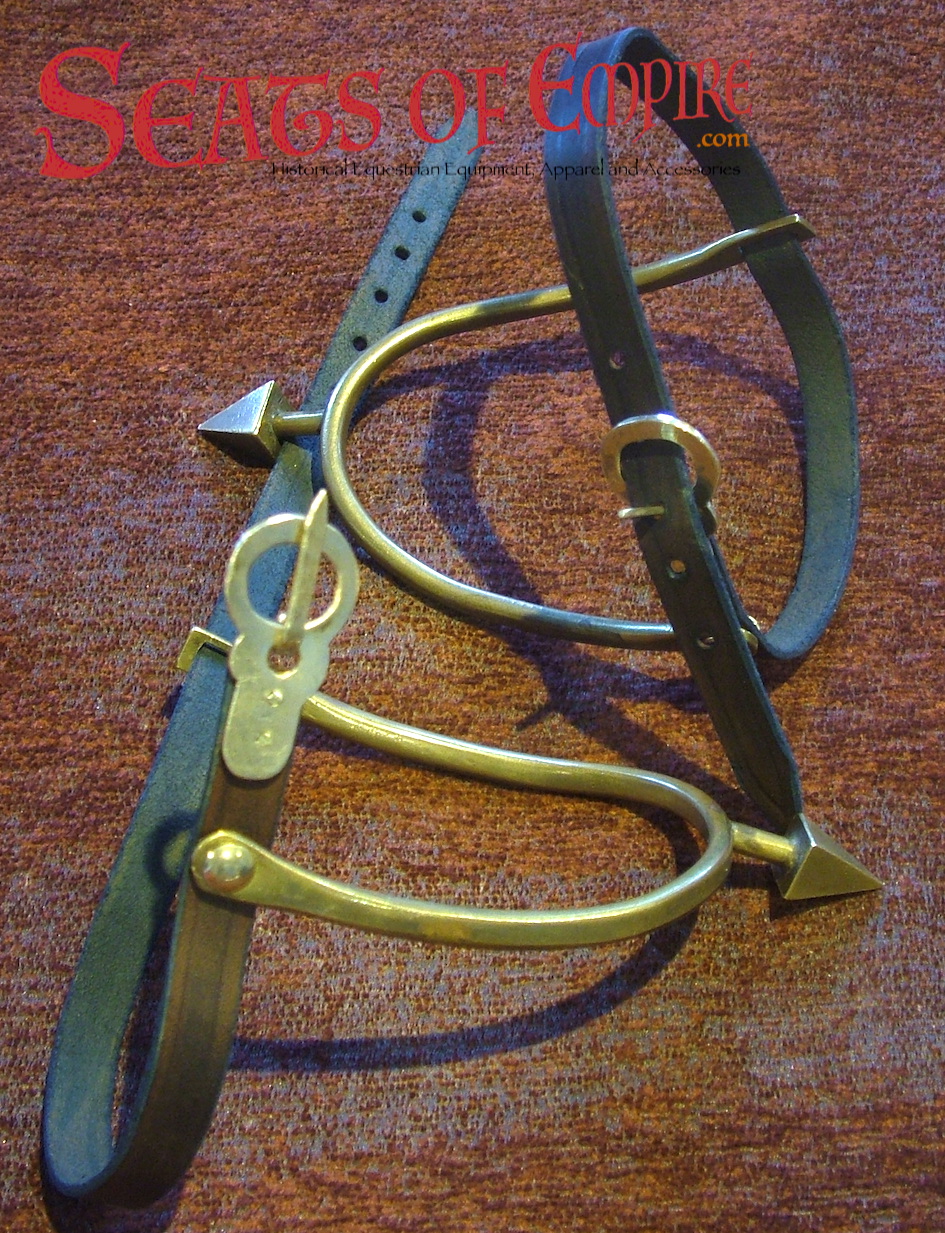
Archery equipment
Leatherwork
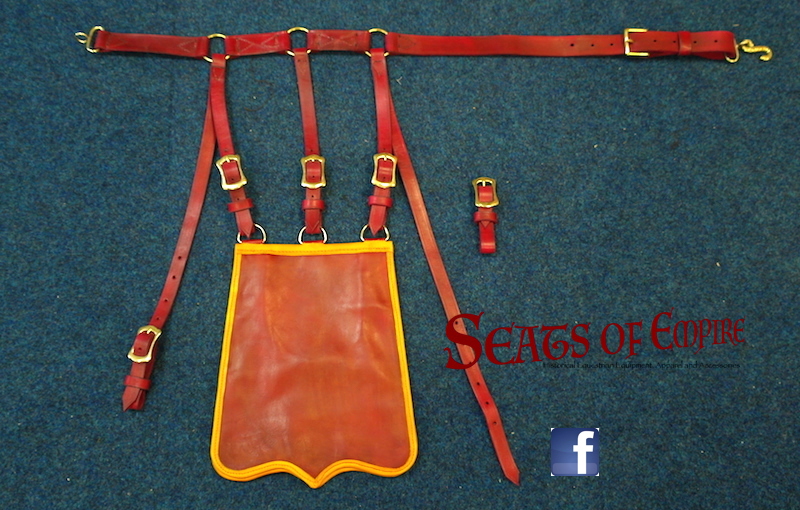
sword belt and sabretache of the napoleonic era from £200.
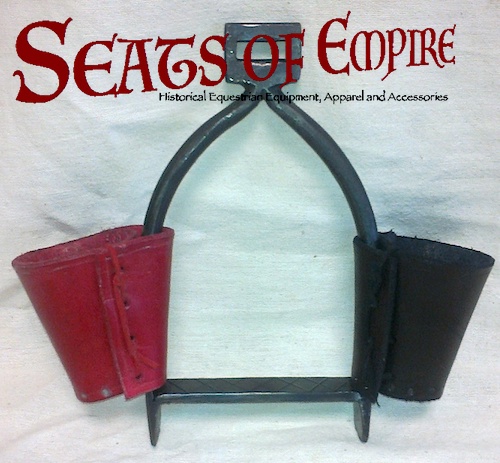
lance buckets and holsters from £15.
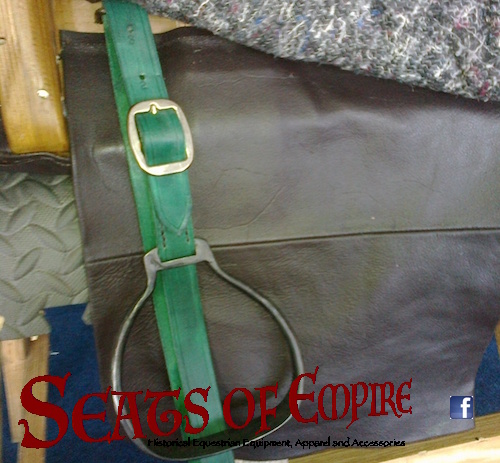
custom coloured stirrup leathers: £60/pair.
Shields
Ancient sources, and debatable later ones like the Bayeaux Embroidery, represent shield no different to those of infantry being used on horseback, making for a very poor connection with the mount. And even today one does see (at least in England) riders in re-enactments struggling with similarly poor arrangements. It does not have to be that way, however.
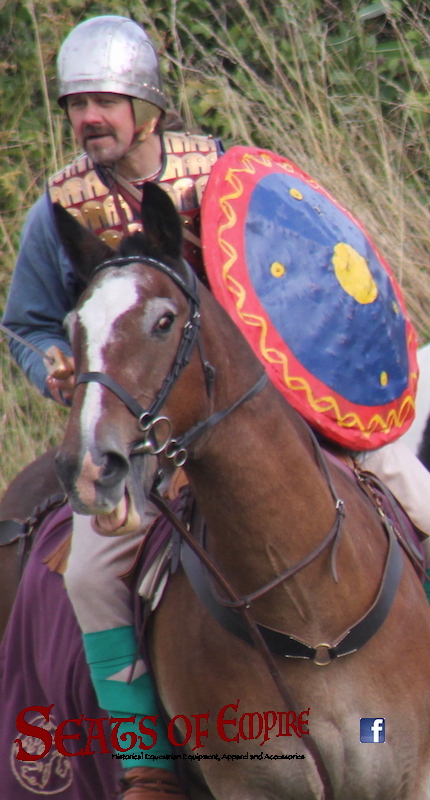
Round, lenticular shields were used over the greatest span of time and range of cultures.
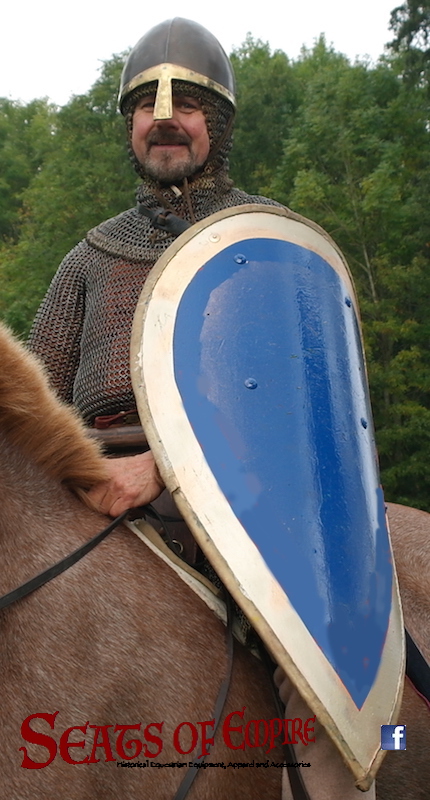
While the Bayeaux Embroidery shows the Norman knights using their shields in a manner that hardly allows any fine horse control, there is one set of fittings shown in that source that can be used in a much more functional way.
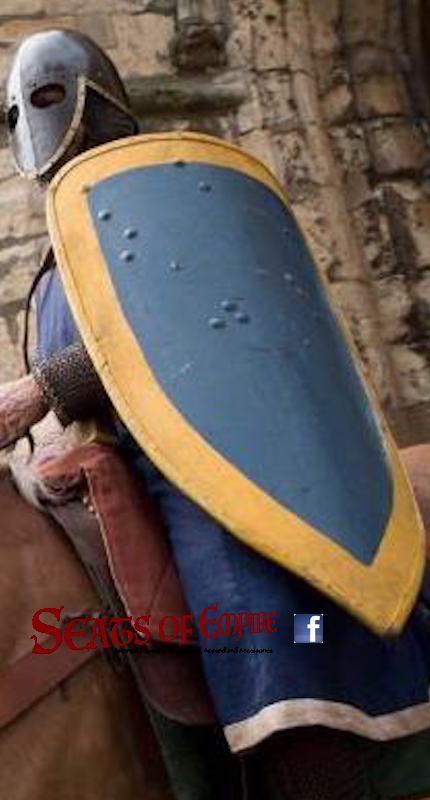
A few pictorial sources of the twelfth and thirteenth centuries show …
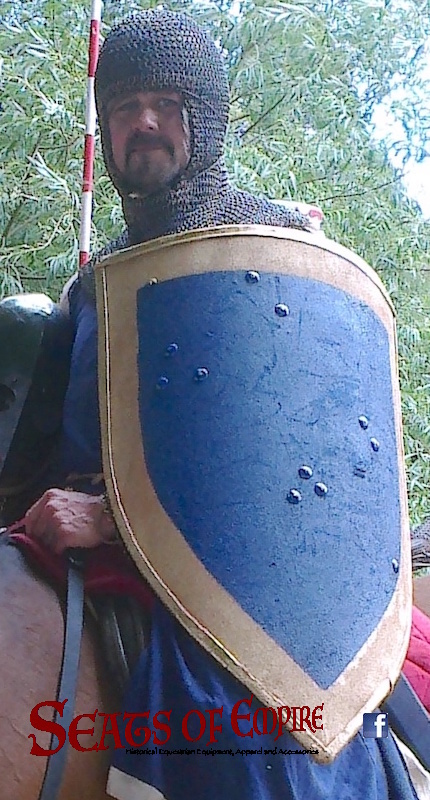
… an innovation that is very comfortable, practical and effective.
Copyright: Timothy George Dawson 2021, 2024


